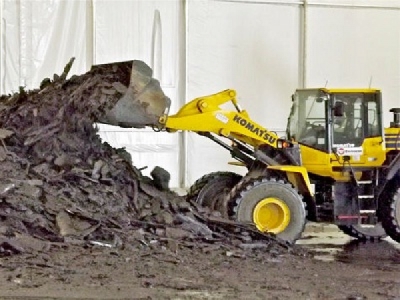
Posted on January 12, 2017
By Kevin Murphy, Ashland Daily Press
Northern States Power Co. agreed Tuesday to fund the final phase of cleaning up contaminates at the Ashland Lakeshore Superfund Site.
The utility, also known as Xcel Energy, agreed to design, construct and clean up contaminated sediments in Chequamegon Bay at an estimated cost of $42 million.
Xcel, the U.S. Department of Justice and the Environmental Protection Agency filed a consent decree in federal court in Madison Tuesday, which is expected to be finalized after a 30-day public comment period.
“This agreement will complete the long-awaited cleanup of contamination at the Ashland Lakefront site at the cost of a party responsible for most of the hazardous substances, rather than the public,” John C. Cruden, assistant attorney general for the Environment and Natural Resources Division, said in a news release.
The cleanup helps protect a vital fishery and makes Lake Superior clean and healthier, Acting EPA Region 5 Administrator Robert A. Kaplan, said in the release.
Ashland Mayor Deb Lewis said the final clean up phase should restore the city’s lakefront to a prime recreational area.
“The lakefront will be more fully utilized and the (law)suit settlement takes a dark cloud off the city. People were waiting to see if the clean would bankrupted by the trial,” in which NSP was determined to be responsible for the majority of the cleanup costs, she said.
The city has not had control over the lakefront as Xcel had an extensive breakwater constructed in 2015 to prevent wave action from disturbing sediments during the dredging process. Lakefront remediation has greatly impacted the Ashland Marina, Lewis said.
“When (the cleanup) is completed it will be wonderful,” she added.
Dredging will resume at ice-out this spring, said David Donovan, Xcel project manager.
Dredging will take two forms this summer; mechanical, which uses buckets that seal to lessen the amount of suspended sediments from re-entering the bay as they are removed; and traditional hydraulic dredging, Donovan said.
Dredged material is expected to contain waste wood, construction debris and possibly volatile organic compounds such as benzene, and semi-volatile organic compounds such as naphthalene, which have been identified at the site.
The material will be dewatered on site and trucked to a landfill which had not yet been selected, Donovan said.
Donovan wants to complete dredging the 16-acre site this summer and return next spring to restore the lakebed to aquatic conditions that promote a diverse fishery, he said.
The Department of Natural Resources and EPA will oversee the cleanup process.
The cleanup will create employment opportunities for truck drivers and equipment operators, said Donovan.
A 40-acre lakefront site was cleaned up in Phase 1 of the ongoing project.
Contaminates produced from 1885 to 1947 at a manufactured gas plant located on a bluff above the bay washed into the water over the years. Xcel acquired the plant from the Lake Superior Power District and the liability for the contaminates in 1986.
The city operated a wastewater treatment plant that also emptied into the bay until the plant closed in the early 1990s.
A railroad and a sawmill were also identified as potential polluters in a federal clean-up order.
The Soo Line and Wisconsin Central Ltd. railroads, electrical contractor L.E. Meyers Co., and the city of Ashland agreed in 2014 to pay a combined $10.5 million toward cleanup costs, according a prior consent decree filed in federal court.
NSP, which had begun onshore cleanup operations at the lakefront in 1995, was to receive $6 million of that the settlement and the federal government was to receive $4.5 million.
Xcel then unsuccessfully sued Meyers and the city and county of Ashland in federal court to collect a share of the estimated $42 million cost of the second phase of the clean up.
Source: Ashland Daily Press





